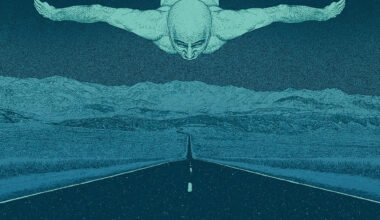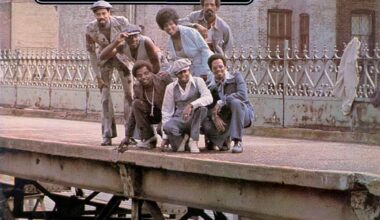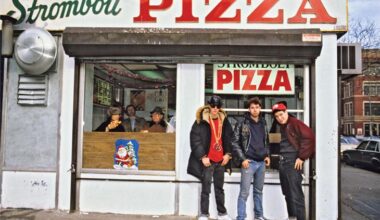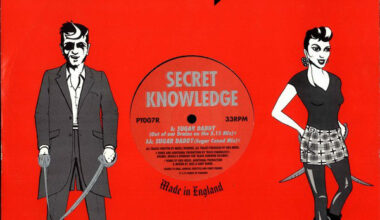Wandering off on another free-range voyage of discovery, this month it’s Altamont, early Moog excursions, prolific Welsh band Sendelica and a bit of Ghost Box for good measure
THEN CAME A SOUND UNLIKE ANY ANYONE HAD EVER HEARD

As the sun rose over Altamont Speedway on the morning of 6 December 1969, the crew who’d been working all night on building the unusually low stage and its equipment towers had no idea it was welcoming one of the darkest days in musical history. Neither did early arrivals staking their prime positions to catch The Rolling Stones headlining what was being touted as California’s answer to Woodstock.
Then came a sound unlike any anyone had ever heard, or rather felt, before; a subsonic rumble that shook the parched dusty ground and seemed to swell from the very bowels of the earth. After several minutes, the power was shut off by a bewildered sound man and the day continued its inexorable path. In a few hours, twisted by evil speed-laced LSD, rot-gut wine and uncontrollable dark forces, the festival will see four deaths, including a brutal murder carried out by marauding Hell’s Angels in front of the stage while the Stones are playing, oblivious to the full extent of the carnage. By the time the group pile Vietnam-style into an over-crowded helicopter to escape, the optimism of the 1960s has been brutally wiped out, its shockwaves resonating into the coming decade.
It hadn’t started like that. In fact, that subsonic fanfare in this most unlikely of settings was one of the first live solo outings for the new Moog synthesiser. Before darkness and violence claimed this forsaken hell-hole at the edge of the planet, San Francisco boffin Doug McKechnie, who was supplying sound equipment for the event, set up the Moog he’d been playing at Family Dog events since the summer (along with something called the SF Radical Lab’s Moog Synthesiser). Still an expensive and experimental novelty, the Moog that Doug deployed had nine oscillators, three envelope generators and two sequencers, controlled by 60 knobs that he operated by the seat of his pants.
Doug had unleashed his electronic serenade while the Grateful Dead’s PA and amps were still being set up, starting what he planned as a simple sawtooth wave with the low, subsonic bass rumble that would rise from 55 to 25,000 cycles. Unfortunately, there was no communication system between stage and soundboard up on the lighting tower being manned by Augustus Stanley Owsley III, the legendary LSD manufacturer who also handled the Dead’s innovative sound system. With meters flashing red at the alien onslaught, Owsley shut down the PA in panic, instantly silencing this early Moog performance (although a snatch of Doug in action made the ‘Gimme Shelter’ movie).
THE MOOG SYNTHESISER WAS THE FIRST NEW INSTRUMENT IN 300 YEARS

By 1969, Robert Moog’s revolutionary new invention had graced ‘The Zodiac: Cosmic Sounds’ album two years earlier and tracks by The Supremes, The Byrds, The Doors and The Monkees, but it was still considered a novelty, used as a colouring tool rather than solo instrument. Live performance was something else entirely as the early model was so big, although co-inventor Herbert Deutsch had unveiled it in a September 1965 concert at New York Town Hall with his New York Improvisation Quartet and another early public demonstration took place in a tent at June 1967’s Monterey festival.
That year also saw John Cage and La Monte Young use Moog Modulars at their events and Donald Erb present it with chamber orchestra at Expo 1967. In 1968, psychedelic theremin exponents Lothar And The Hand People performed their ‘Space Hymn’ LP using a Moog at New York’s Generation club, while pianist Paul Bley and pioneering singer Annette Peacock used theirs after November 1969 in events at the city’s Town Hall and Lincoln Center.
“The Moog synthesiser was the first new instrument in 300 years,” Peacock, one of this country’s true overlooked sonic innovators, once told me about these explorations, “and seemed to obviously indicate the next step in music’s evolution, a new frontier to explore and to conquer. It was irresistible to a young artist. I met Robert Moog after I managed to convince Paul that acquiring a synthesiser was essential.
“Though Paul was initially reluctant, I coerced his complicity, and we travelled upstate to see Moog and persuade him to give us one. As we drove home with a prototype synthesizer in the back of the hired station wagon, I realised, with the same exhilarated sense of victory, relief, and vagueness about what comes next as Dustin Hoffman’s character in the last scene of ‘The Graduate’, that I had no idea how I was going to make this thing that looked like an airplane cockpit work.”
A WHOLE NEW WORLD OF MIND-BLOWING, BARRIER-FREE PURE SPACE MUSIC

Some 50 years on, while those early displays laid foundations for everything in Electronic Sound world, rock music largely still scrapes by the same old trails The Stones were blazing back then. Quite unbelievably, employing an open mind when it comes to trampling musical boundaries can still be hazardous, which brings me to one of the few current bands that are gleefully carrying that hoary torch to new and uncharted realms.
For the last 12 years, Sendelica have operated their stunningly-prolific cottage industry in far-flung west Wales, releasing 18 studio albums, eight live sets, plus one-off singles and solo spin-offs that chart a wide gamut of sonic styles, including krautrock, P-Funk and electronic dance grooves; sometimes all at once! Their legendary covers have included The United States Of America and a galaxy-bothering 21-minute rework of ‘I Feel Love’.
Sendelica’s most recent release is the ‘Disco Daze’ EP (FRG), which sees singer Karen Langley lending her pure tones to ‘My House Is Made By Angel Air’, a flickeringly ethereal pulser with 1990s anthem ambience bolstered by producer Colin Consterdine’s drum machine and two remixes by Marc “Astralasia” Swordfish. It’s just the tip of this awesome band’s mighty iceberg; a whole new world of mind-blowing, barrier-free pure space music. This’ll be followed by the whole ‘Angel Air’ album, whose sensory seduction includes a surging cover of The United States Of America’s ‘Hard Coming Love’.
ETHEREAL SYNTHS AND SHIMMERING PSYCHEDELIC GAUZES
Still on the subject of electronics effectively hot-wiring rock bands, Lisbon’s Beautify Junkyards are set to release their third album of synth-swathed acid-folk. ‘The Invisible World Of Beautify Junkyards’ (Ghost Box) might hark back to the British acid-folk of the late 1960s, but bathed in deep forest gateaux of ethereal synths and shimmering psychedelic gauzes to stunning effect.
If only Doug McKechnie could have known what was to come that day his booming new machine was shut down as an alien invasion.





